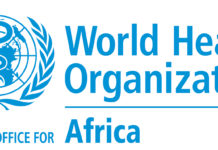A study has found that Malaria rapid diagnostic tests (mRDTs) introduced to improve the use of antimalarials may have unintended negative consequences, such as overuse of antibiotics.
A WHO policy change in 2010, requiring that malaria cases should be confirmed before treatment, has increased the use of mRDTs on a large scale, according to the team of researchers from countries including Ghana, Afghanistan, Nigeria, Sweden, Tanzania, Uganda and the United Kingdom.
Dr Heidi Hopkins, co-author of the study and an associate professor of malaria and diagnostics at the UK-based London School of Hygiene and Tropical Medicine, said negative test results for malaria prompted a significant shift to antibiotic prescriptions – thus trading one potential problem of overuse of malaria drugs with overuse of antibiotics.
He said “to our knowledge, this is the largest and most comprehensive analysis that directly compares treatment practices in settings with and without mRDTs.”
The study was published in the American Journal of Tropical Medicine and Hygiene recently, and available to the Ghana News Agency.
The researchers analysed harmonised data from ten artemisinin-based combination therapy (ACT) Consortium studies conducted between 2007 and 2013.
Sampling more than 500,000 patient visits across five African countries – Cameroon, Ghana, Nigeria, Tanzania and Uganda – and Afghanistan, they found that even patients who were not confirmed by mRDTs as having malaria were prescribed ACTs, and some who had malaria were denied ACTs.
“Prescribing did not always adhere to malaria test results,” the authors said.
“In several settings, ACTs were prescribed to more than 30 per cent of test-negative patients or to fewer than 80 per cent of test-positive patients. Either an antimalarial or an antibiotic was prescribed for more than 75 per cent of patients across most settings.”
Dr Simon Kariuki, Chief Research Officer at the Kenya Medical Research Institute, said the findings are not totally unexpected given that the introduction of mRDTs are meant to curb the indiscriminate use of antimalarials.
He said the increase in antibiotic prescriptions is an interesting and significant finding, although again not totally unexpected: “This is because many countries in Sub-Saharan Africa don’t have the laboratory capacity to investigate other causes of fever in those who are mRDT negative, which could be due to viral or bacterial infection.”
Whereas mRDTs help healthcare workers diagnose malaria, there are still no such simple point-of-care diagnostics for other common illnesses that cause fever. This means that when a malaria test is negative, healthcare workers are not sure what to do, Hopkins said.
Unnecessary use of antimalarials and antibiotics drives malaria resistance, Hopkins said, adding that there is a need to ensure that the benefits of introducing mRDTs do not come at the cost of increasing antibiotic use.
According to Dr Kariuki, the findings call for an urgent need to strengthen diagnostic capacities in malaria-endemic areas when mRDTs are introduced.
To prevent the complex situation where those who test positive are not being treated with an antimalarial, or those who test negative are being treated with the drugs, Dr Kariuki says the measures to be taken involve training for healthcare workers, patient perceptions and the lack of availability of antimalarials at certain times.
He said “these findings call for strengthening of health systems in malaria-endemic areas, especially diagnostic capacity and training of healthcare workers at all levels.”







